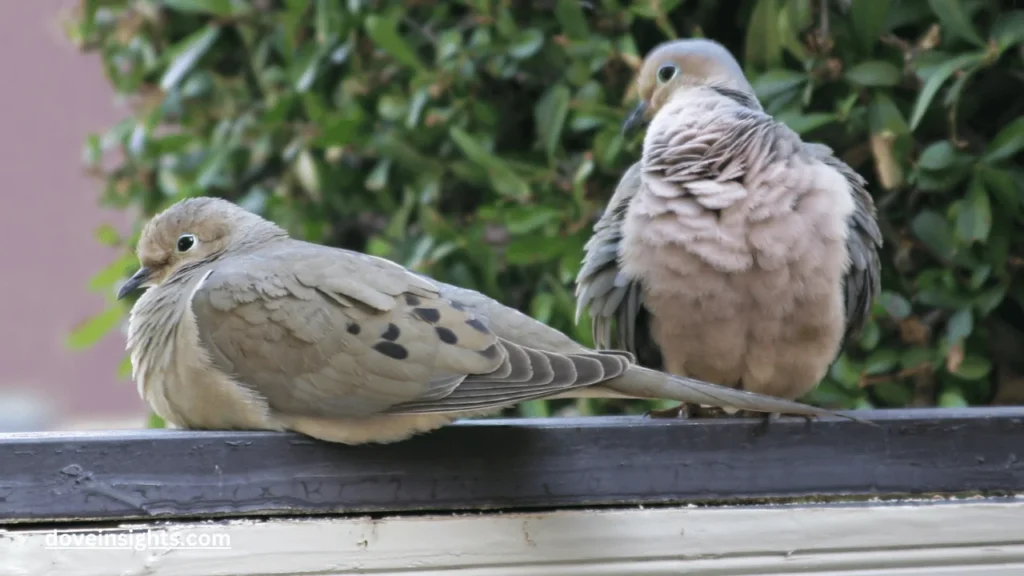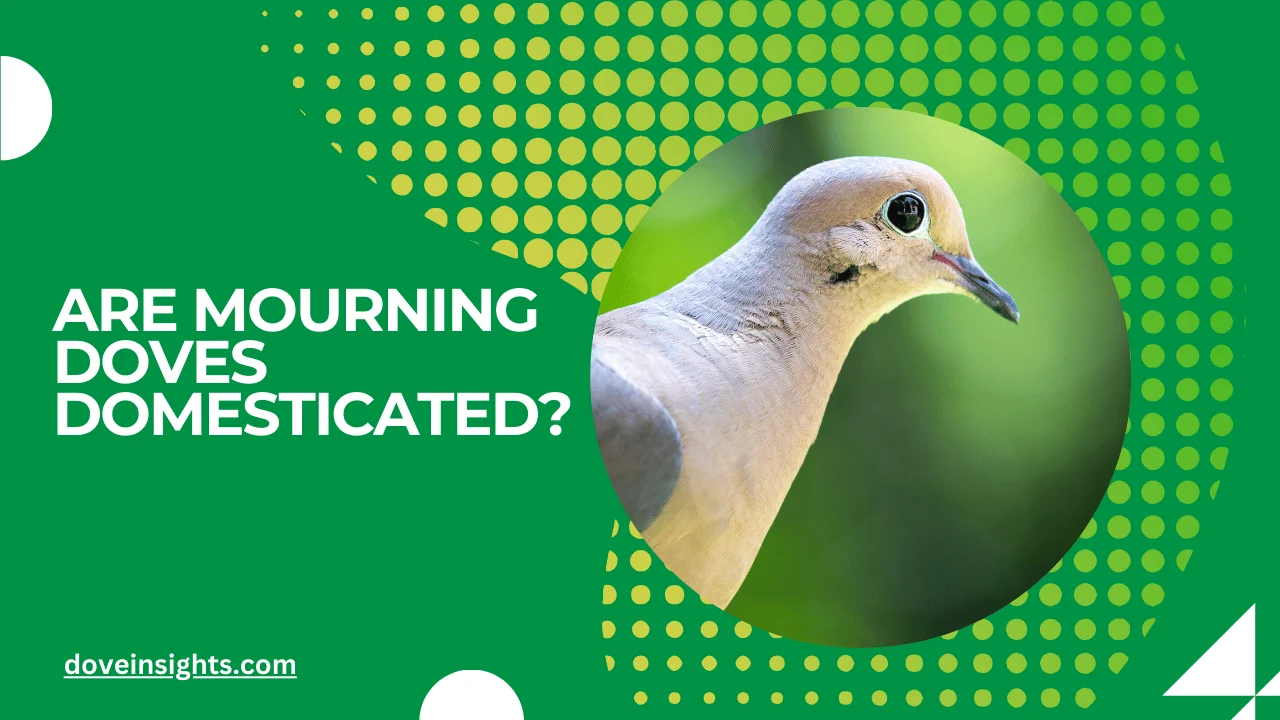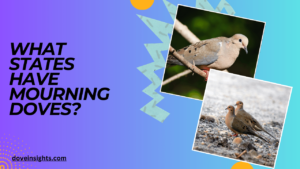Imagine sitting in your backyard, a soft breeze rustling through the trees, when suddenly, a pair of mourning doves land on a nearby fence.
With their gentle cooing and graceful flight, they seem peaceful, serene, and utterly untouchable. But have you ever wondered, can these beautiful creatures be domesticated? Unlike the familiar pigeons you might see in city parks, mourning doves have a natural, wild appeal. Yet, people have long been captivated by their calm demeanor and graceful appearance.
So, what about their domestication? Are mourning doves meant to stay wild, or can they be tamed and kept as pets?
In this article, we explore the truth behind the domestication of mourning doves, the challenges involved, and whether they are truly suited for life as a household pet.
Contents
Understanding Mourning Doves: Their Natural Habitat and Behavior
Mourning doves are native to North America and can be found across much of the continent. These birds are often spotted in woodlands, fields, urban areas, and even suburban neighborhoods.
Unlike other types of doves, mourning doves prefer to nest on the ground or in low shrubs, where they can be more vulnerable to predators. Their calm nature, coupled with a hauntingly beautiful song, has made them a symbol of peace and love.
Their diet mainly consists of seeds, grains, and fruits, which they forage for on the ground. Mourning doves are monogamous, forming strong pair bonds during the breeding season.
However, despite their gentle appearance, they have certain wild instincts that are integral to their survival.
Their ability to fly long distances in search of food, their territorial behavior during mating seasons, and their aversion to captivity all suggest that mourning doves are better suited to the wild rather than domestication.
Are Mourning Doves Ever Domesticated?
The concept of domestication involves adapting a wild species to thrive in human-controlled environments.
While there are some species of doves and pigeons that have been successfully domesticated—such as the common rock pigeon—the mourning dove does not typically fit into this category.
Unlike pigeons, mourning doves do not have a long history of human interaction, nor have they undergone the same evolutionary processes to become more sociable with people.
Mourning doves are often found in backyards or on balconies, where they can freely fly and find food. Some individuals might develop a certain level of tolerance to humans, particularly if they are fed regularly.
However, this behavior does not equate to domestication. In fact, mourning doves are often more timid and shy, preferring to maintain a safe distance from humans.
Their natural inclination is to avoid captivity, and they do not display the same attachment to humans that domesticated birds, such as parrots, often do.
Challenges of Keeping Mourning Doves as Pets
While mourning doves may appear docile, keeping them as pets comes with numerous challenges. One of the main hurdles is their need for space and freedom. Mourning doves are long-distance fliers and require ample room to move, which can be difficult to provide in a traditional home or apartment setting.
They are also extremely sensitive to changes in their environment, making them prone to stress if confined to a small cage or an area without enough stimulation.
Additionally, mourning doves have a specialized diet consisting mainly of seeds and grains, and they need access to fresh water at all times. Their feeding habits are not as easily managed as those of more typical pet birds, such as cockatiels or budgies.
Moreover, mourning doves are not known for their ability to be trained or to develop a bond with their owners in the same way as some other pet birds. As a result, they are often more suited to wildlife rehabilitation or as wild backyard visitors rather than household pets.
The Ethical Considerations of Keeping Mourning Doves
Another critical factor to consider is the ethics of keeping mourning doves as pets. In many places, it is illegal to capture or keep mourning doves without specific permits.
This is because mourning doves are protected under various wildlife conservation laws, including the Migratory Bird Treaty Act in the United States. The act prohibits the capture, possession, or hunting of most native bird species without permission from the authorities.
Even if it were legal, keeping mourning doves as pets might not align with the birds’ natural instincts and well-being. Wild animals that are kept in captivity often experience significant stress and can suffer from health problems due to the lack of space, inadequate diets, and inability to engage in natural behaviors.
Instead of domestication, conservation efforts and efforts to protect mourning doves in their natural habitats seem like a much more ethical and beneficial approach to their preservation.
Mourning Doves in Modern Society: A Symbol of Peace and Hope

Although mourning doves are not domesticated, they have carved out a special place in modern society. The bird’s calm demeanor and melancholic cooing have made it a symbol of peace and hope in various cultures around the world.
Their appearances in literature, art, and folklore have contributed to this reputation, elevating the mourning dove to an almost sacred status.
In many ways, the mourning dove is a reminder of the balance that exists between nature and civilization. While these birds may not belong in our homes, they thrive in our backyards and gardens, offering an opportunity to observe and appreciate wildlife without attempting to domesticate them.
By creating environments that support their natural behavior, we can coexist with mourning doves, allowing them to flourish in their own way while enriching our lives with their presence.
Conclusion:
In conclusion, mourning doves are not domesticated animals and are best suited to their natural habitats. While they can coexist with humans in shared environments, they do not exhibit the behaviors or characteristics that would make them suitable for life as pets.
Instead of attempting to tame these beautiful creatures, it is important to respect their wild nature and focus on protecting their habitats and ensuring their survival.
Mourning doves are a reminder that not all animals are meant to be kept under human control—some are meant to fly free, bringing beauty and peace into our lives without being confined to cages.
FAQ’s
Can mourning doves be kept as pets?
Mourning doves are not typically domesticated and are best left in their natural habitats. While they may tolerate human presence in certain cases, they do not make suitable pets due to their need for space, freedom, and specialized care.
Are mourning doves friendly to humans?
Mourning doves are generally shy and avoid direct interaction with humans. They may become accustomed to human presence in areas where they frequently visit, but they do not form strong bonds with people like other domesticated birds.
Do mourning doves make good pet birds?
No, mourning doves are not ideal pets. They require a lot of space, a specialized diet, and a stress-free environment, all of which are difficult to provide in captivity. They also do not enjoy being confined.
Are mourning doves endangered?
No, mourning doves are not endangered. They are one of the most abundant bird species in North America. However, they are still protected under wildlife laws like the Migratory Bird Treaty Act.
Can you tame a mourning dove?
While some mourning doves might become accustomed to human presence, they cannot be truly tamed or domesticated in the way other birds, like parrots, can be.
What is the lifespan of a mourning dove?
In the wild, mourning doves typically live between 1 to 3 years, though some may survive longer under optimal conditions.








